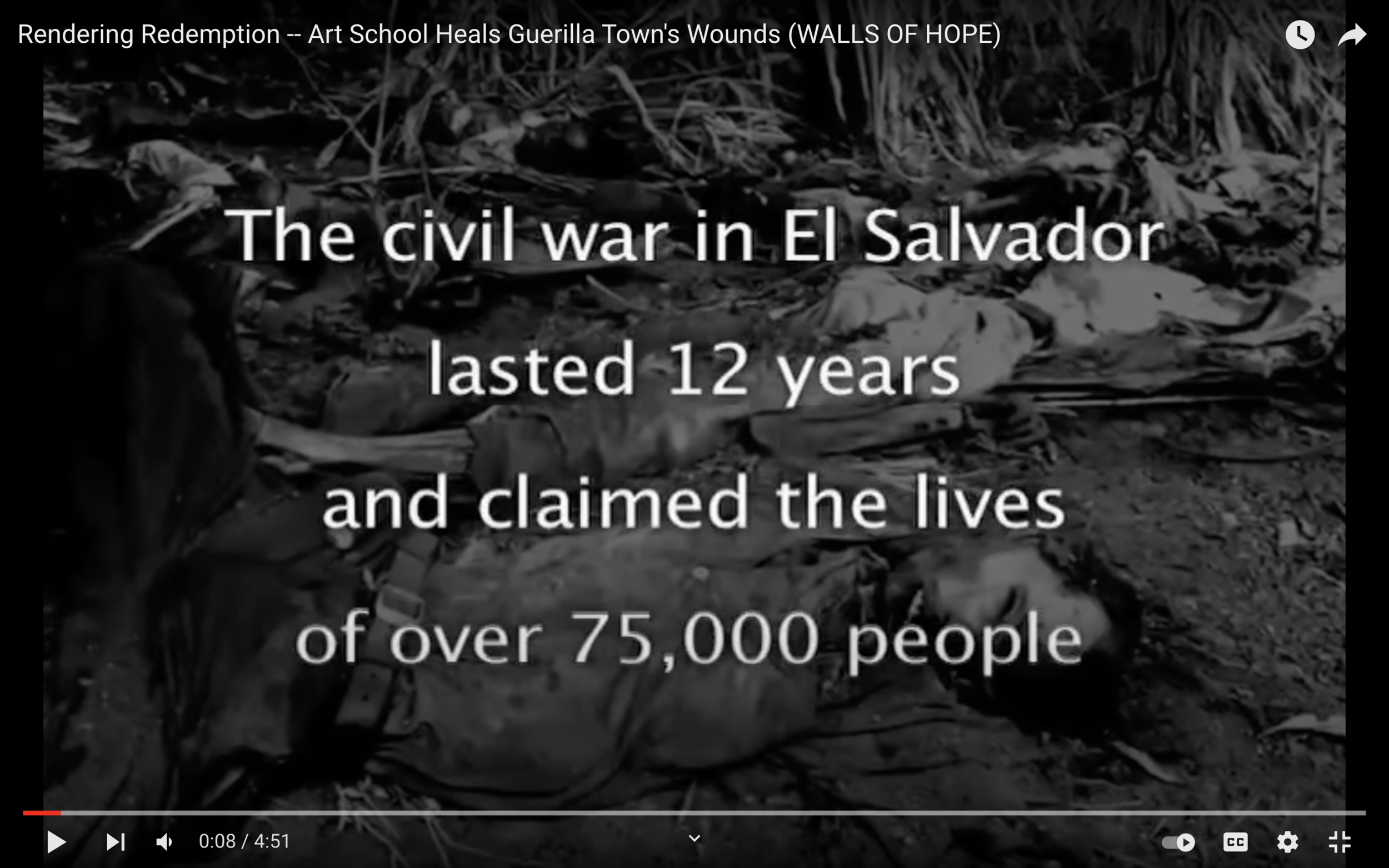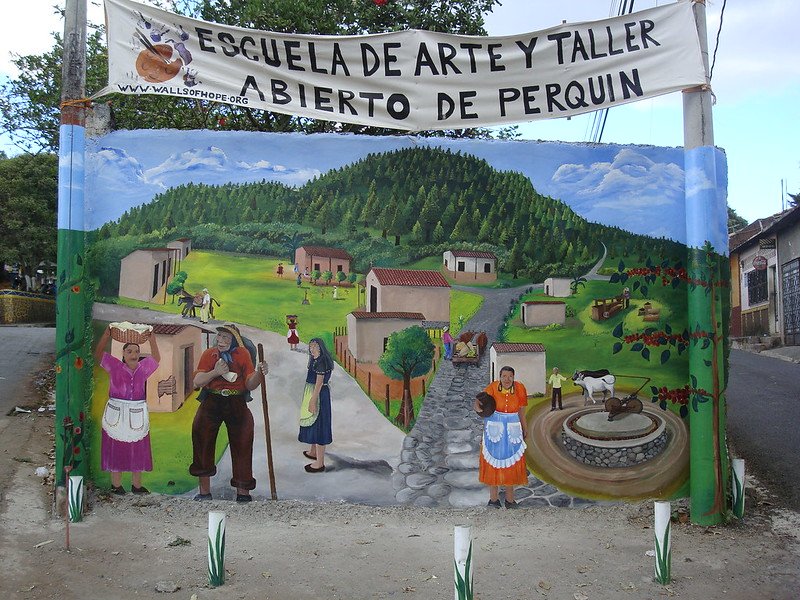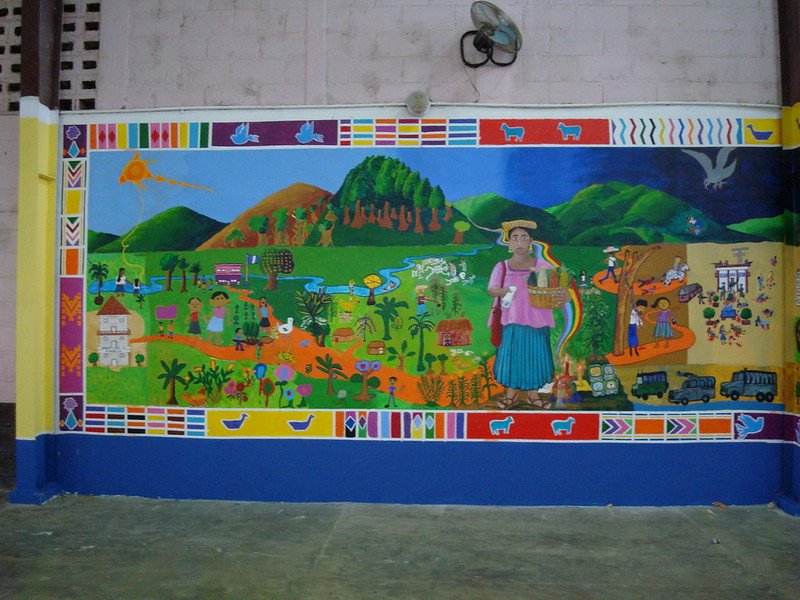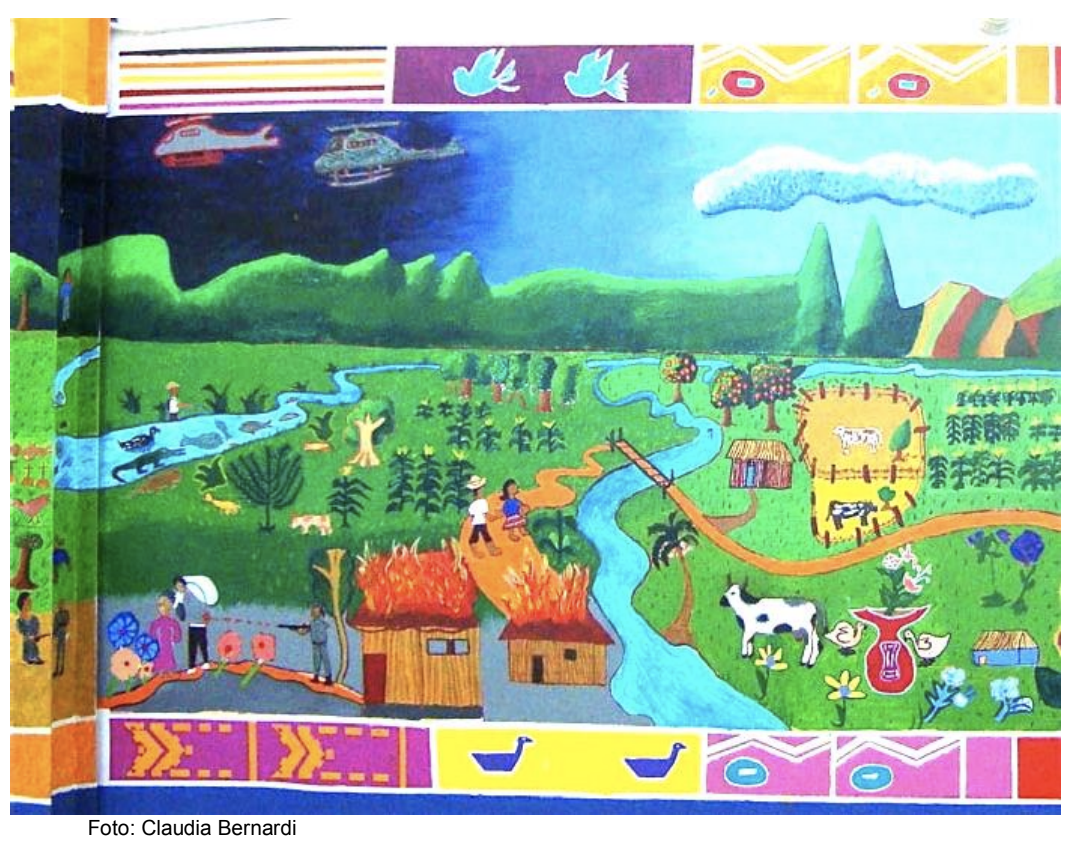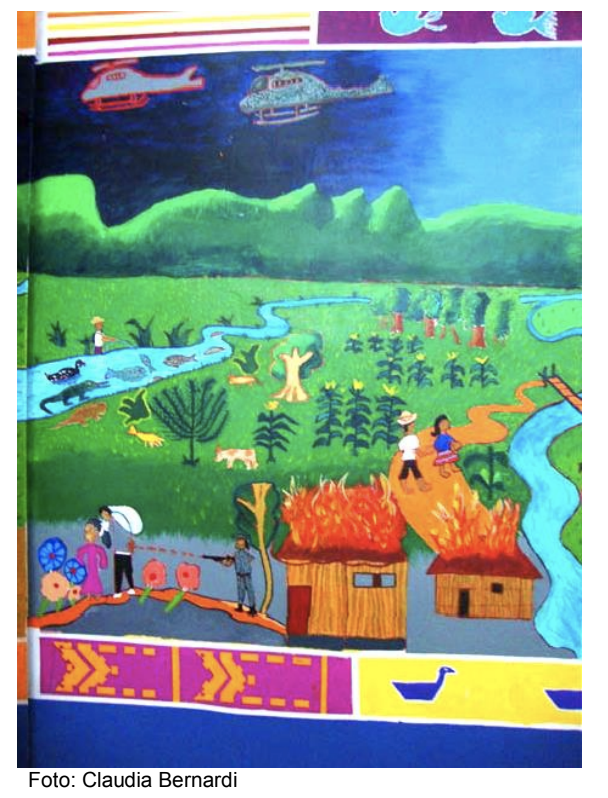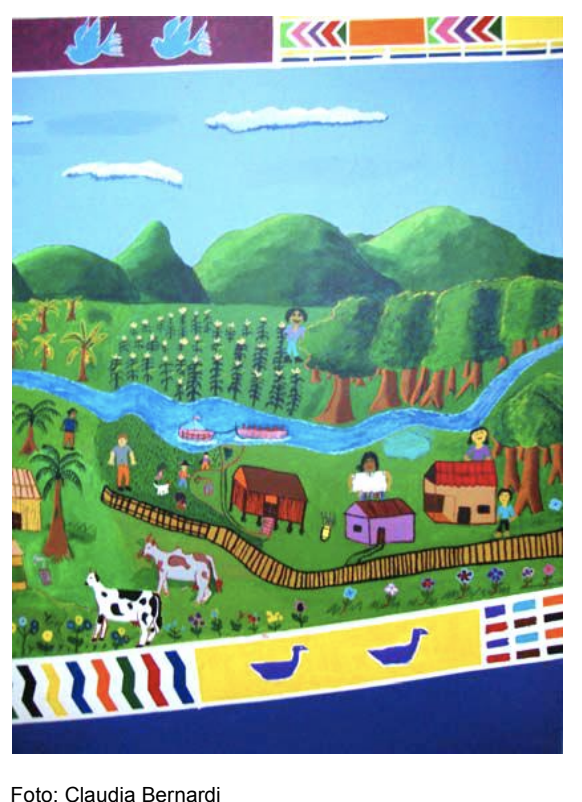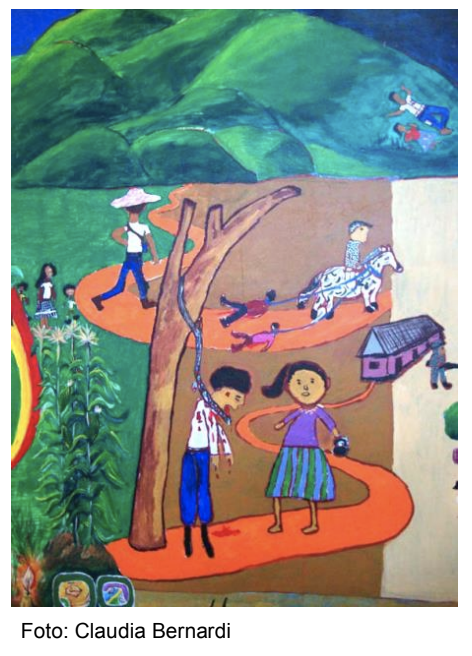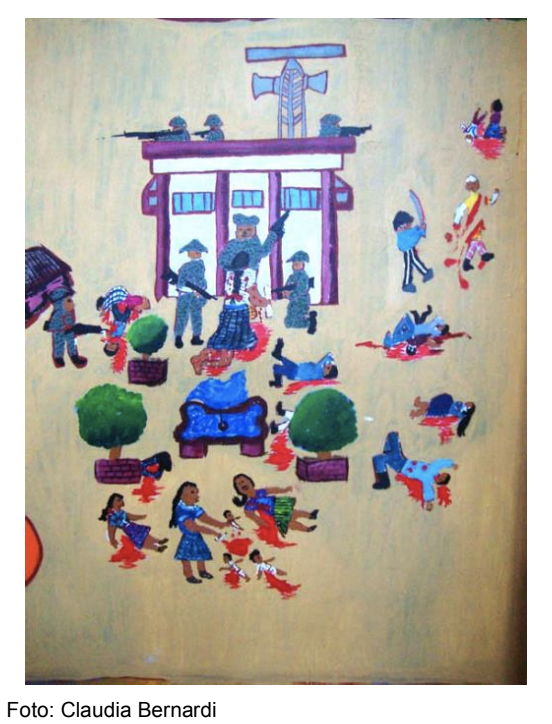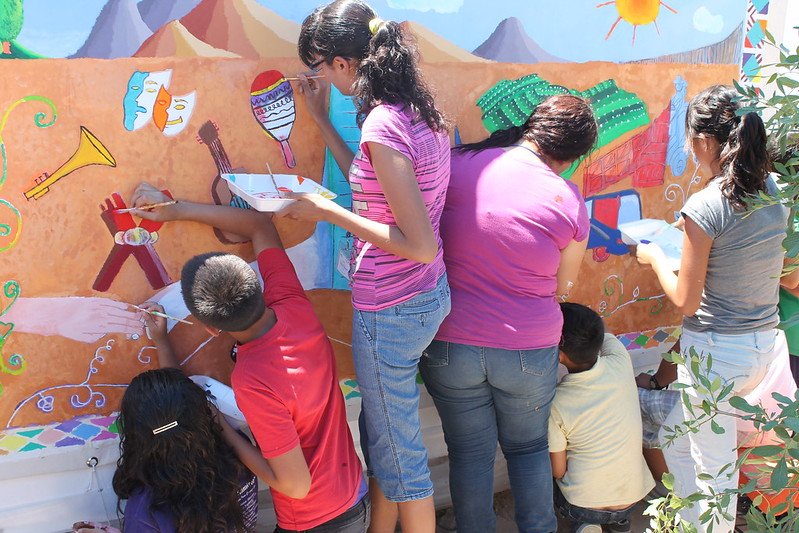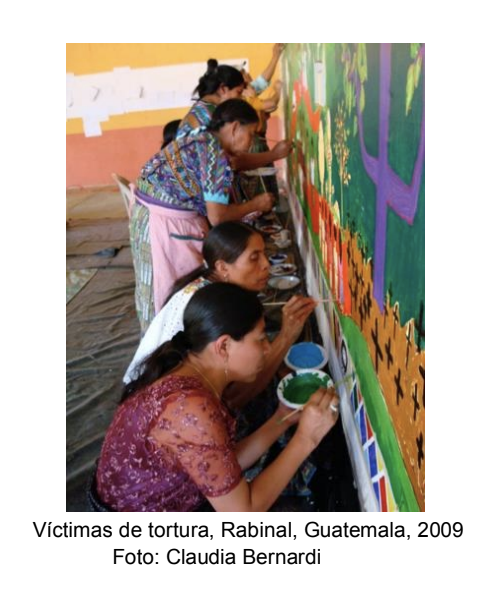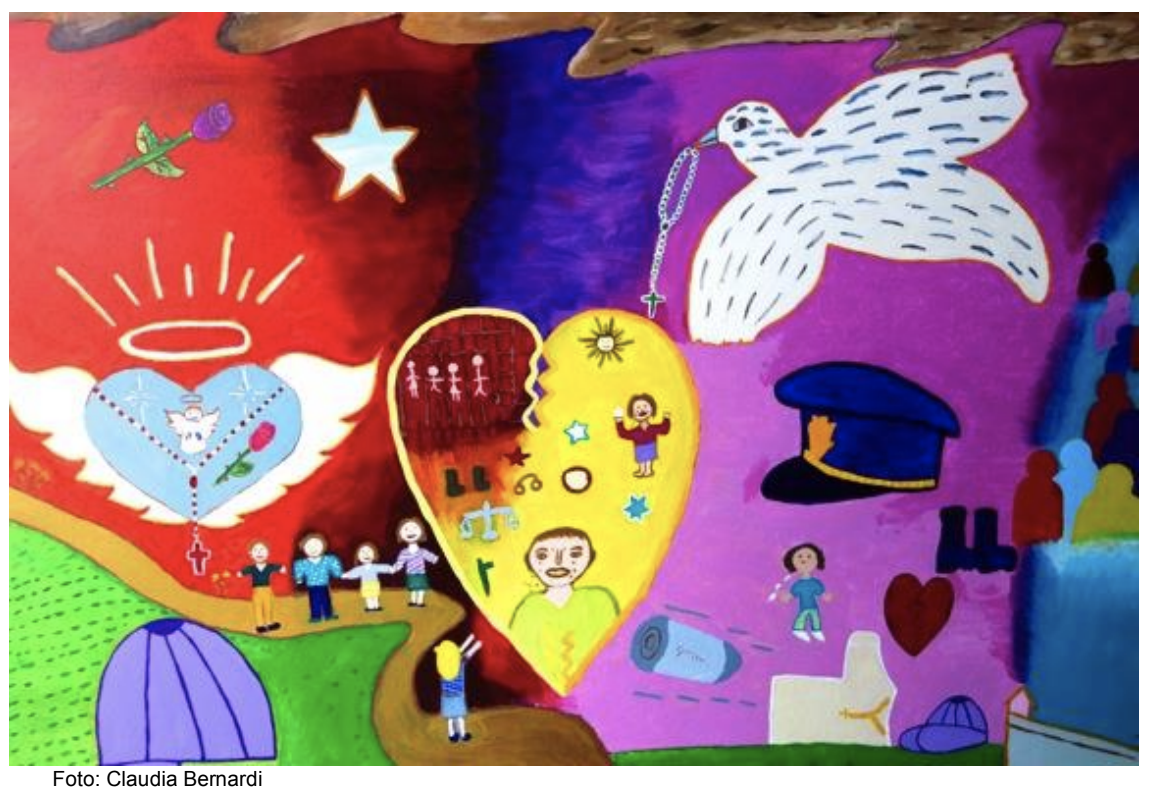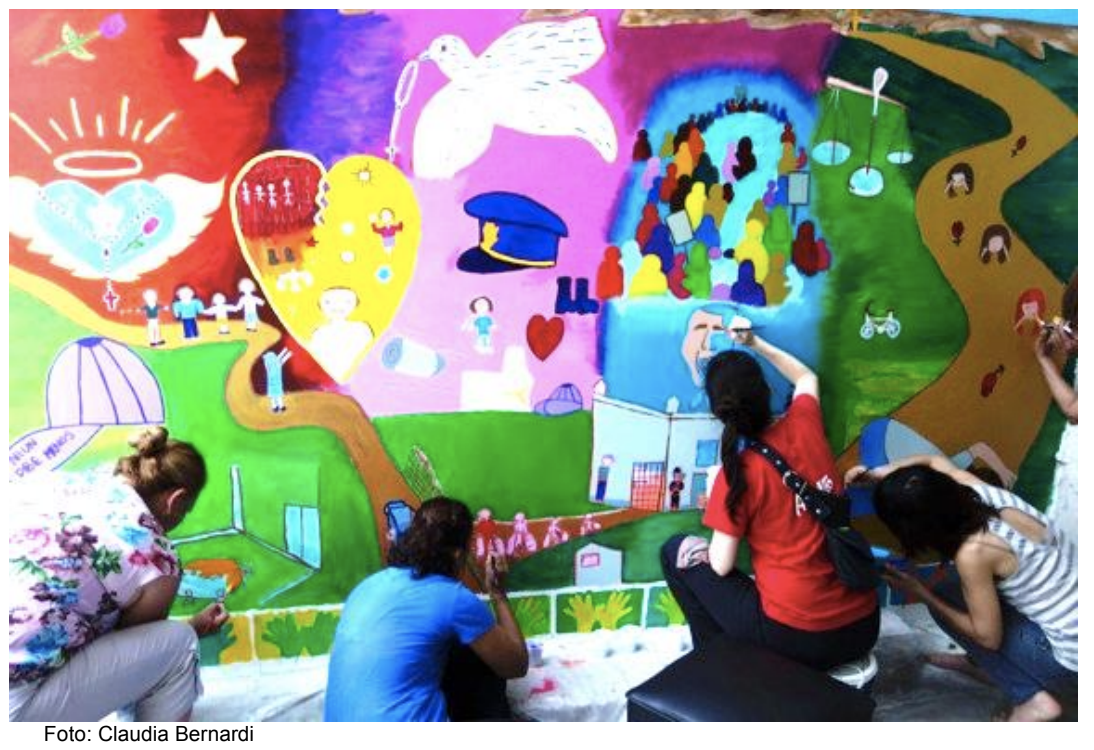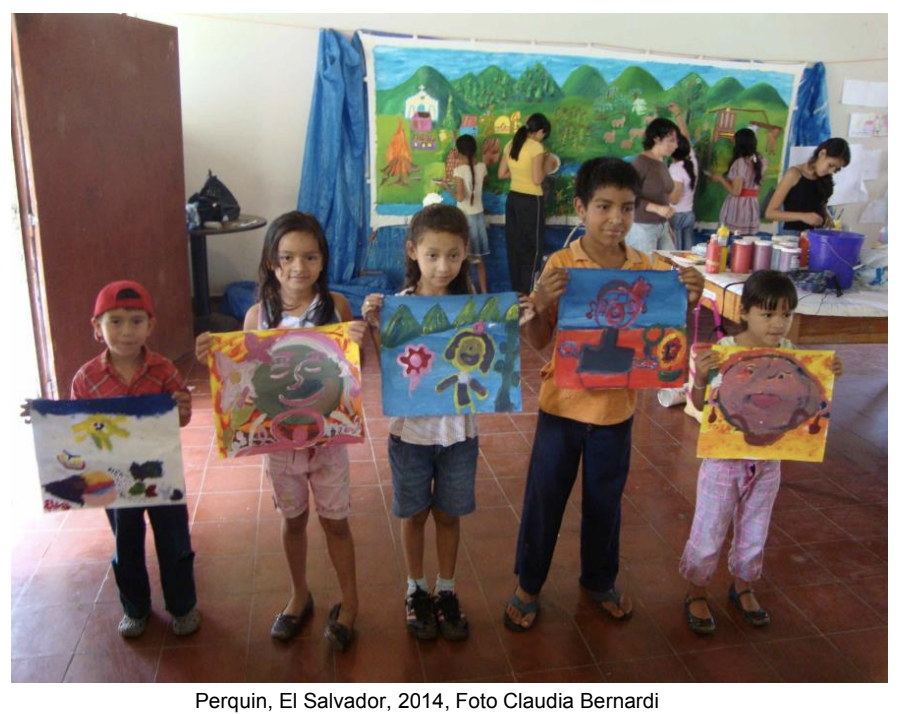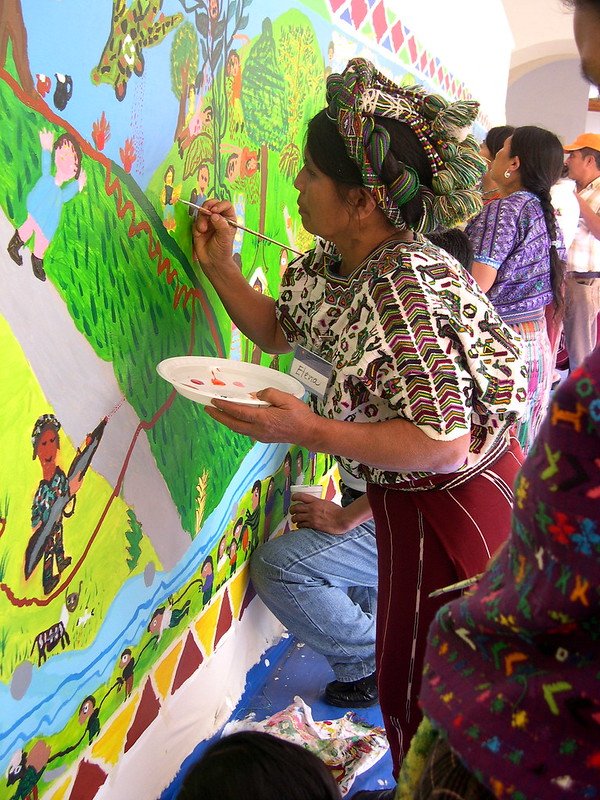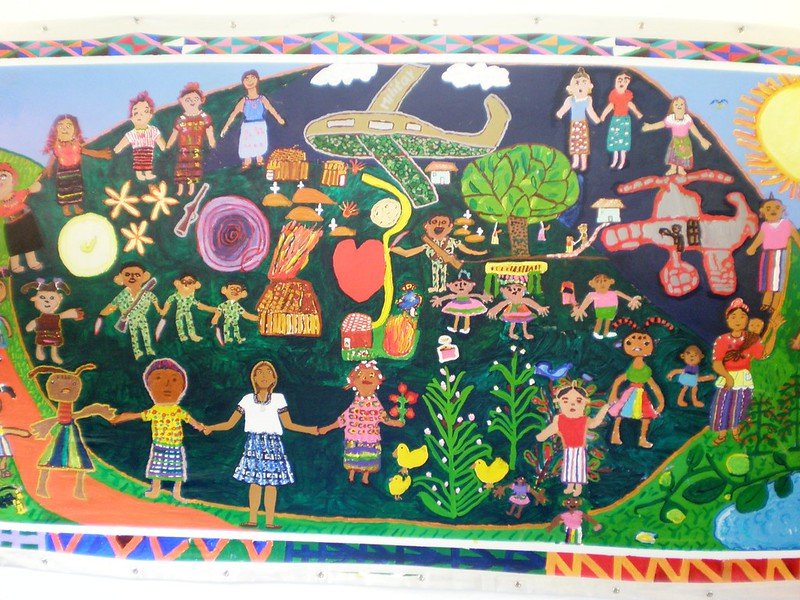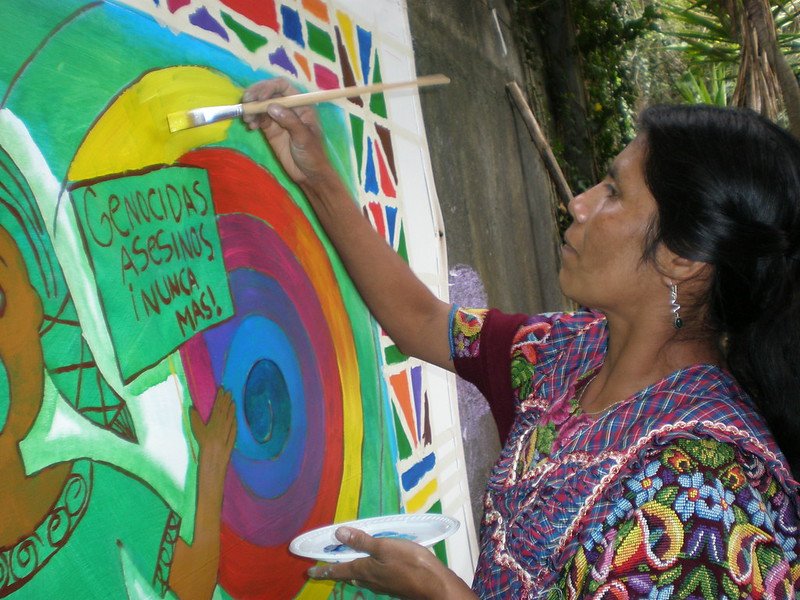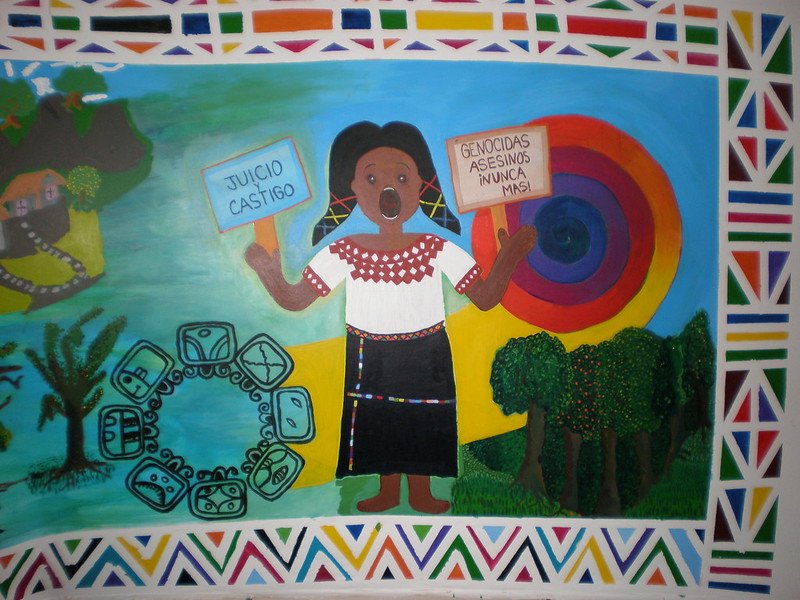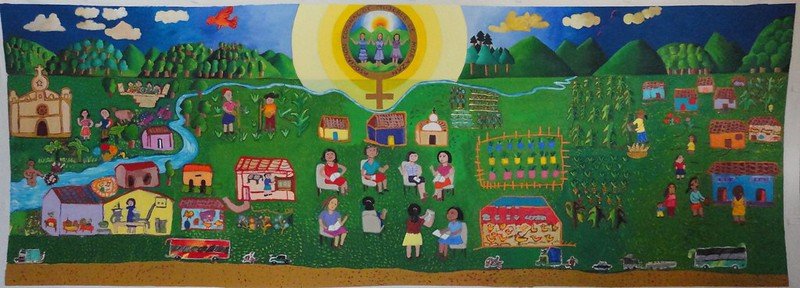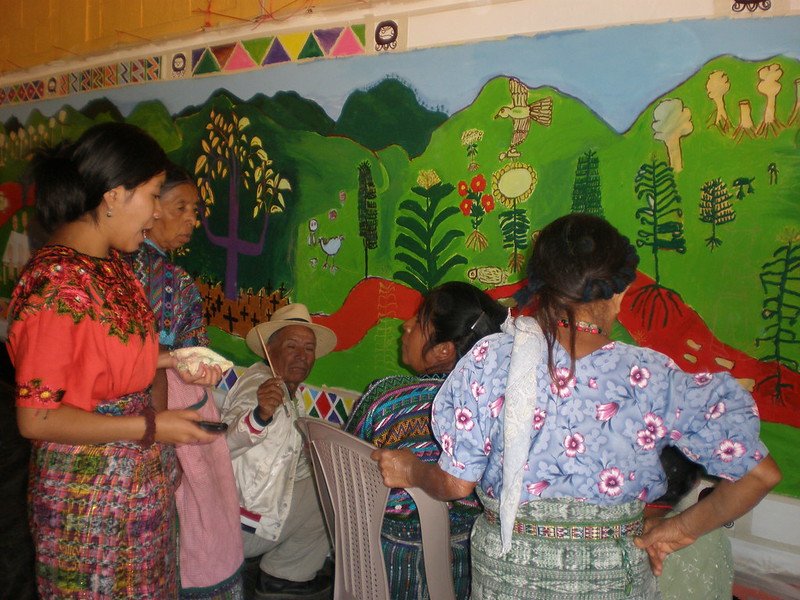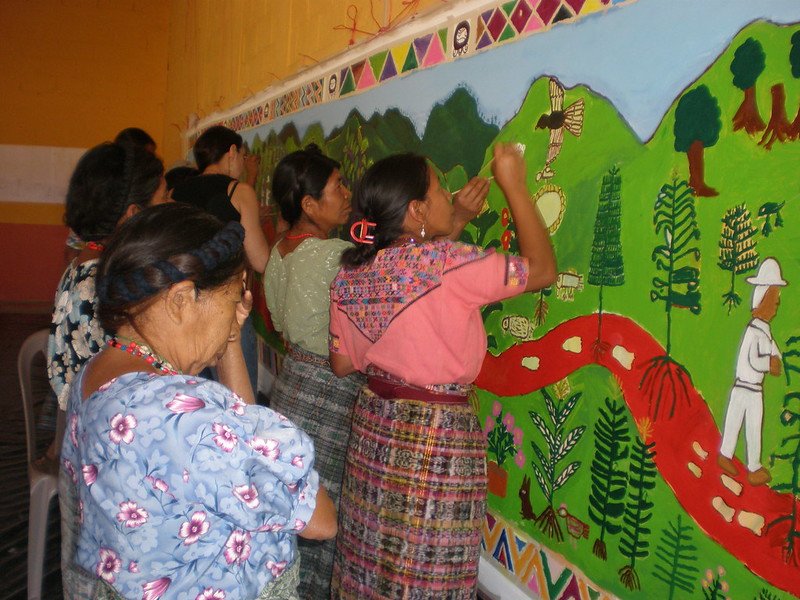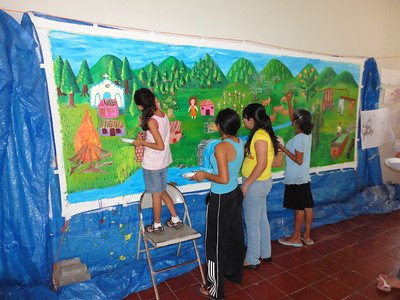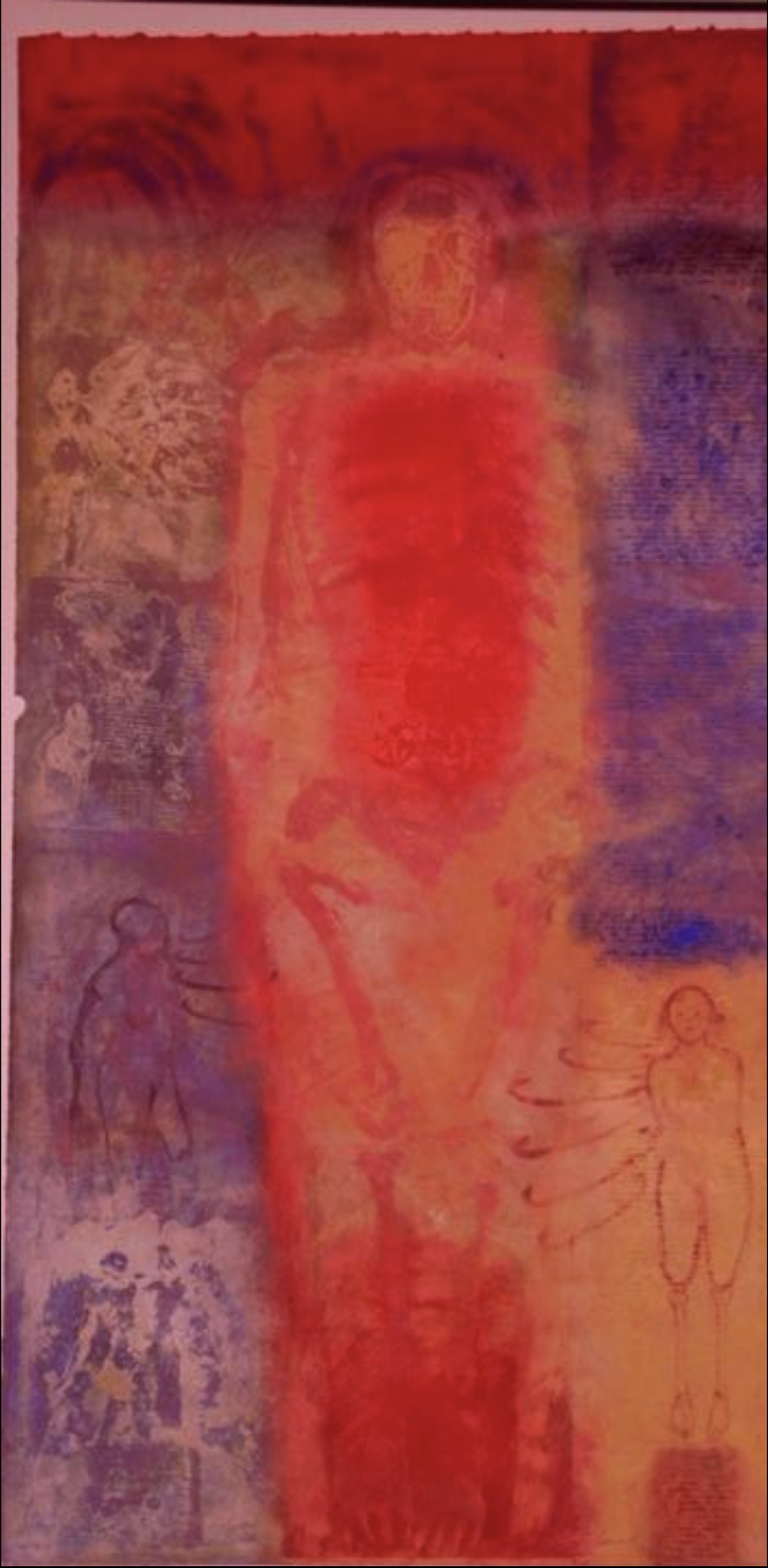Las Maestras Center for Xicana[x] Indigenous Thought, Art and Social Praxis was honored to host la Maestra Claudia Bernardi as our Spring 2022 “Artist in Residence”. UC Santa Barbara students y la comunidad convivieron y aprendieron acerca de la resistencia y poder del arte en comunidad.
This week-long residency with the internationally-recognized Argentine artist and human rights activist, Claudia Bernardi, offered UC Santa Barbara and the Santa Barbara community the extraordinary opportunity to explore the ways in which art can intersect directly with human rights to enlist a collaborative form of resistance among the survivors of political violence and entrenched systems of injustice.
ABOUT THE ARTIST
Claudia Bernardi facilitating an intergenerational community dialogue at El Centro Santa Barbara on Thursday, April 14, photo by: Barbara Parmet
Born in Buenos Aires, Argentina, Claudia Bernardi lived through the military junta that ruled the country from 1976 to 1983 (Argentina’s “Dirty War’). She left the country in 1979, but returned in 1984, at the time the Argentine Forensic Anthropology Team (EAAF) was founded. Patricia Bernardi, Claudia's sister, is a founding member of EAAF. Claudia joined the EAAF as a map maker in exhumations in cases of massacres against civilian populations in El Salvador, Guatemala and Ethiopia. Emerging from this experience, Bernardi recognized that art could be used to educate, elucidate, and articulate the communal memories of survivors of human rights atrocities.
An epiphany for Bernardi, she has continued to bridge the divide between art and activism through her life-long engagement with those who have suffered state-sanctioned violence – from “Los Desaparecidos” of Argentina’s “Dirty War” and El Salvador’s “El Mozote Massacre” to the psychological wounding of undocumented minors in U.S. detention camps.
Bernardi received her MFA from the National Institute of Fine Arts in Buenos Aires, as well as the University of California, Berkeley in 1985. In 2004, she received an honorary degree in Doctor of Fine Arts, Honoris Causa, from the University of Wooster in Ohio. Bernardi has exhibited her work both nationally and internationally and taught equally extensively. She has taught at the University of El Salvador, National College of Buenos Aires, California College of Arts in Oakland, Mills College, the San Francisco Art Institute, and the University of Michigan in Ann Arbor. She has worked with the California Art Council in art residencies for over twelve years on community projects targeting groups of political refugees and torture survivors from Latin America.
“I am an artist.
My artwork is born from memory and loss.
It lives in the intersection of art and violence.”
Art for Political Change
Paredes de la Esperanza / Walls for Hope
For the last thirty years Bernardi created, directed, and facilitated collaborative and community-based art projects with survivors of massacres, survivors of torture, survivors of forced exiles and victims of political violence in Argentina, El Salvador, Guatemala, México, Colombia, Northern Ireland, the Balkans, Germany, Switzerland, and the United States.
In 2005, she founded the School of Art and Open Studio of Perquin, Walls of Hope, in Morazán, El Salvador, an area profoundly affected by violence during the Salvadoran civil war. Bernardi established an unprecedented art, education and human rights initiative, rooted in a partnership between art, artists, local institutions and NGOs, known as “El Modelo Perquin”/ “The Perquin Model”. Paredes de Esperanza continues to expand its art and community activities beyond El Salvador.
Four Salvadoran artists/teachers run the school: Claudia Verenice Flores Escolero, Rosa del Carmen Argueta, Samuel Amilcar Varela, and América Argentina Vaquerano, in collaboration with Claudia Bernardi.
The Perquin Model is defined as:
A community based project that engages children, young people and adults in the creation of art that serves as a component of community building.
A project created with the understanding that the participants are survivors of trauma, political violence and prejudice, forced exiles and victims of human rights violations as a result of wars, state terror and armed conflicts.
Participants of the collaborative and community art projects decide on the theme and narrative of each mural to produce a visual testimony that represents the truth of their personal and collective stories.
Art projects focus on the emerging challenges of periods of armed conflict, poverty and uprooting, using the strategies of art and, especially muralism, to preserve the historical memory of these communities.
Collaborative and community art becomes a valuable instrument in the preservation of the Peace Accords and the demand for justice.
The School of Perquin: A video by Josué Rojas and Benedict Flanagan
CARTOGRAPHY OF MEMORY
Bernardi has continued to collaborate with the Argentine Forensic Anthropology Team (EAAF) in investigations of violations of Human Rights. Through her map making work with EAAF’s exhumations of mass graves investigating crimes against civilian population, her art practice became profoundly influenced by these experiences. Not only in the narrative aspect of the piece but, most importantly, in the conceptual realm of finding images through the searching of layers of colored dust. She scratches the surface of the piece identifying human figures that interact with the world of the hidden images. The pigments convey the essential material prima. The intensity and the fugitive condition of pigments, so fragile yet persistent, are metaphors of the elusiveness of life and the never-ending determination of hope.
The installations are frequently created upon testimonies recovered during the exhumations. Bernardi conceptualizes each installation as a documentary, departing from the reports presented by the Argentine Forensic Anthropology Team to the Supreme Court of the country where the investigation takes place. The reports narrate, chronologically, the findings of human remains and associated objects constructing a historical account of the massacre. The creation of artifacts and associated objects resembling the actual findings convey her visual response to the violence that she had witnessed. Bernardi’s intention goes beyond political criticism. It is a way of retaining the communal memories of the survivors.
During the dark period of the pandemic, Claudia and Patricia developed a project, supported by the Fondo Nacional de las Artes, to investigate and archive how their life and work intersect with art, science and human rights. As a result of this project, SIMETRIA-DOS was created and officially presented at the annual International Committee of the Red Cross meeting on March 29, 2022. The webpage archives the outcome of four decades of work in the fields of forensic science and art, adjacent to the pursuit and respect of human rights by the Bernardi sisters.
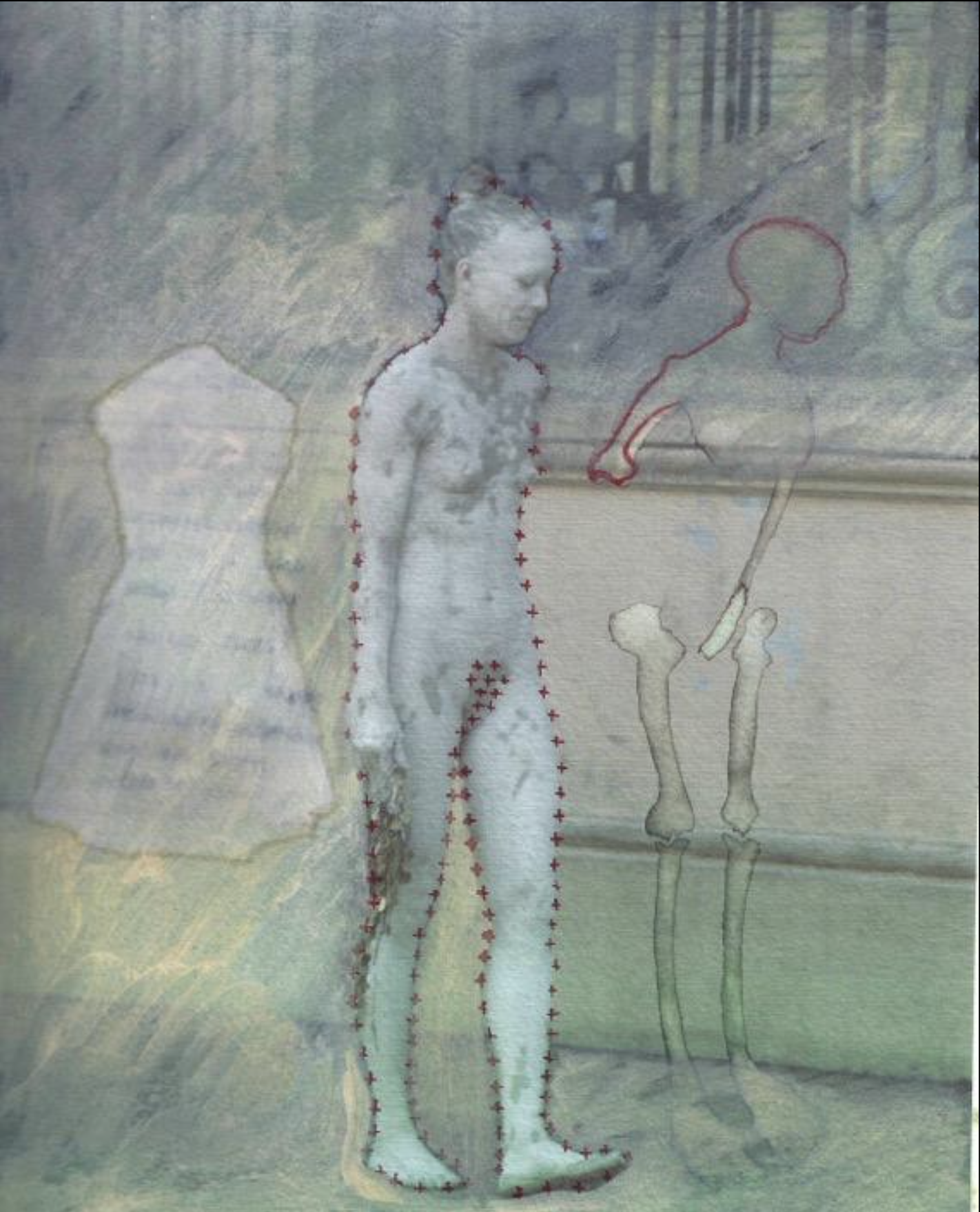
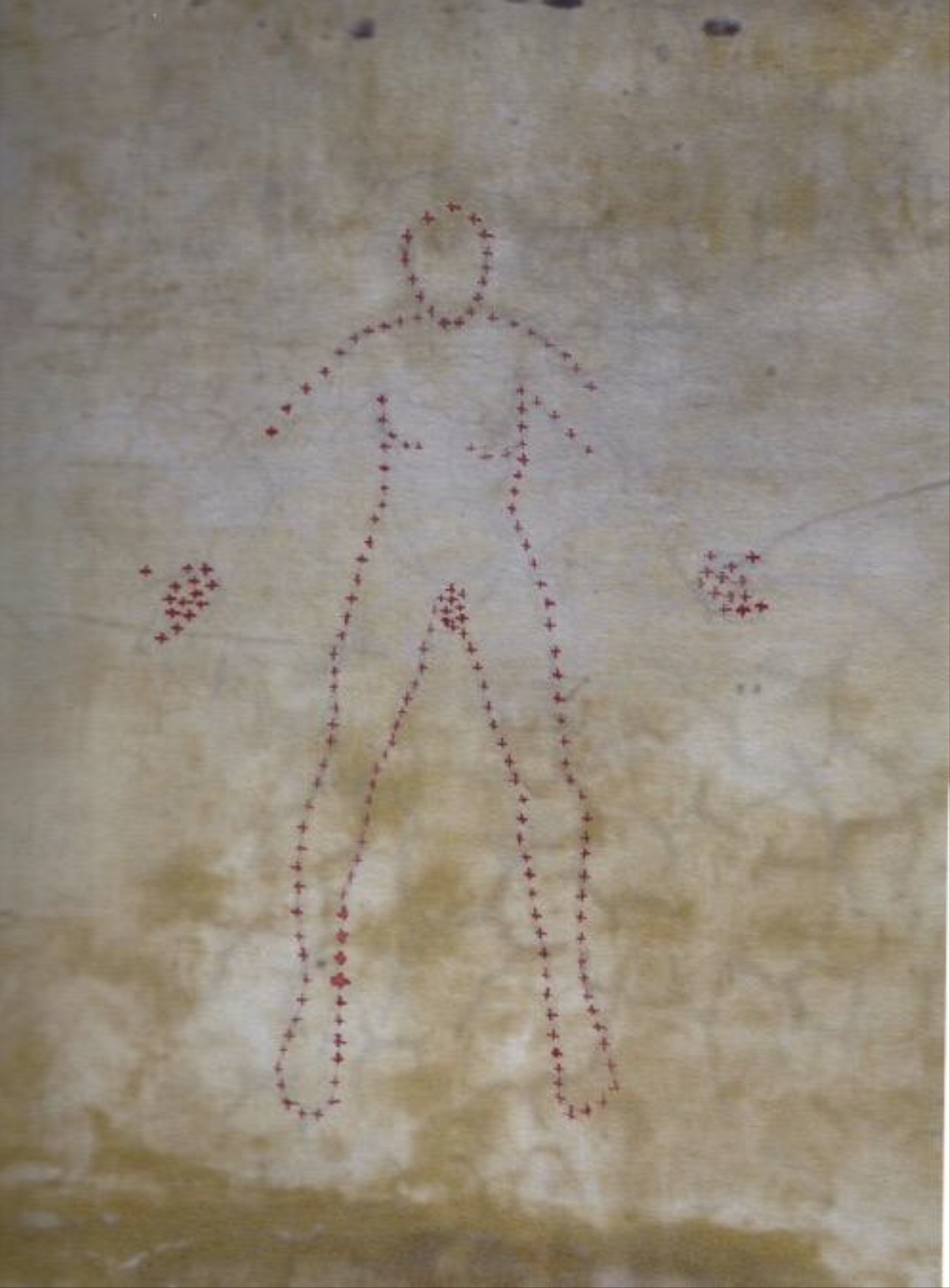
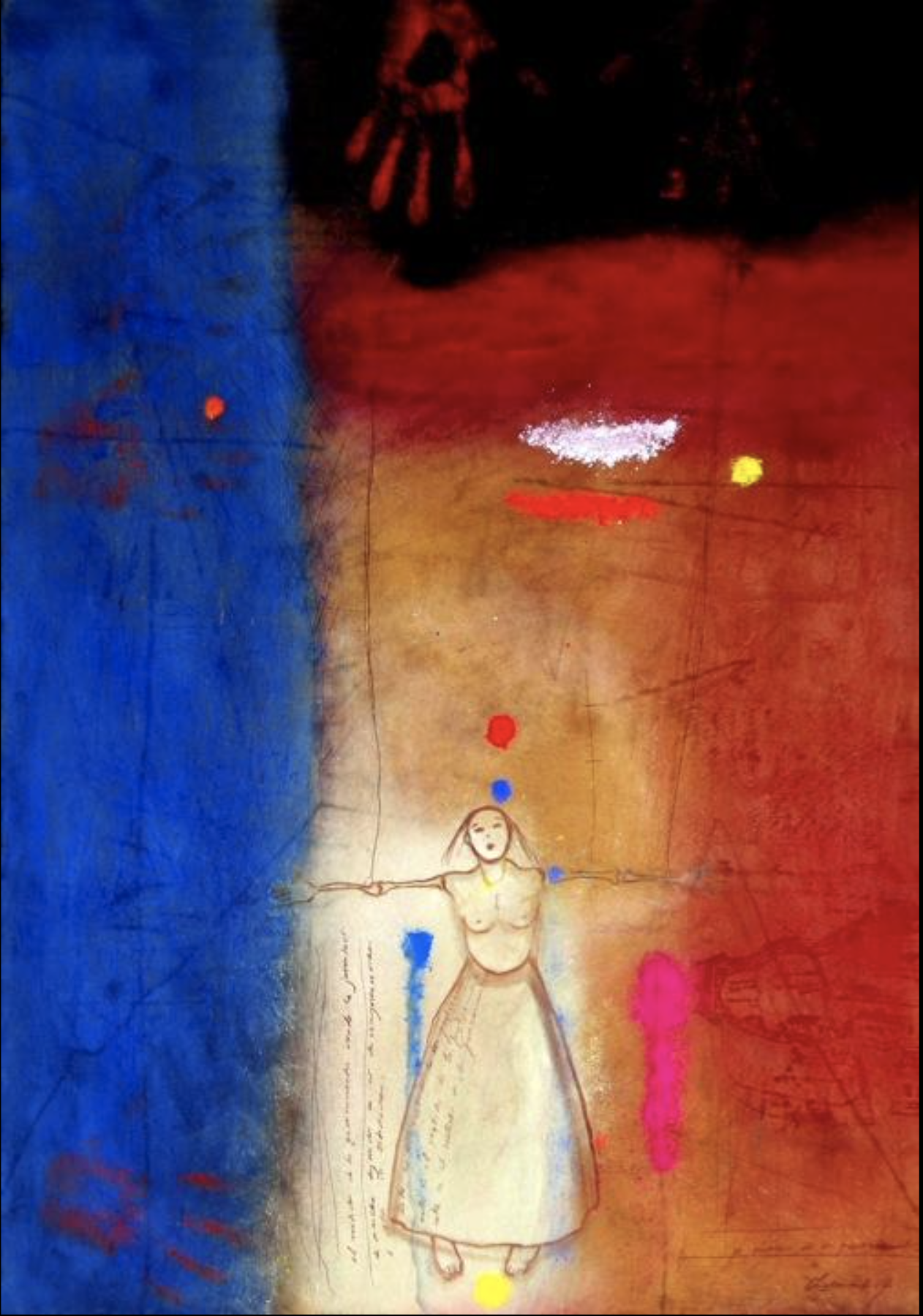
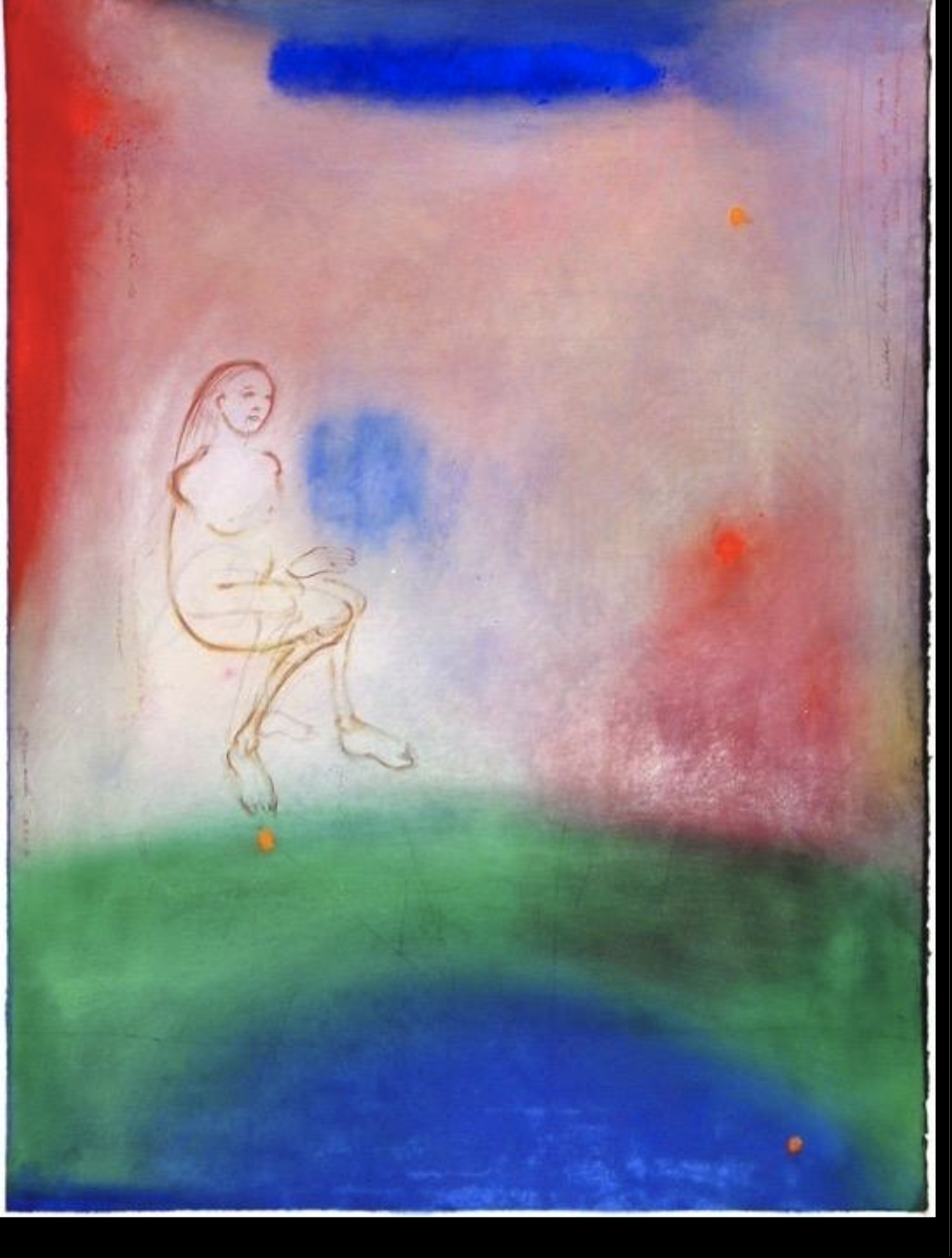
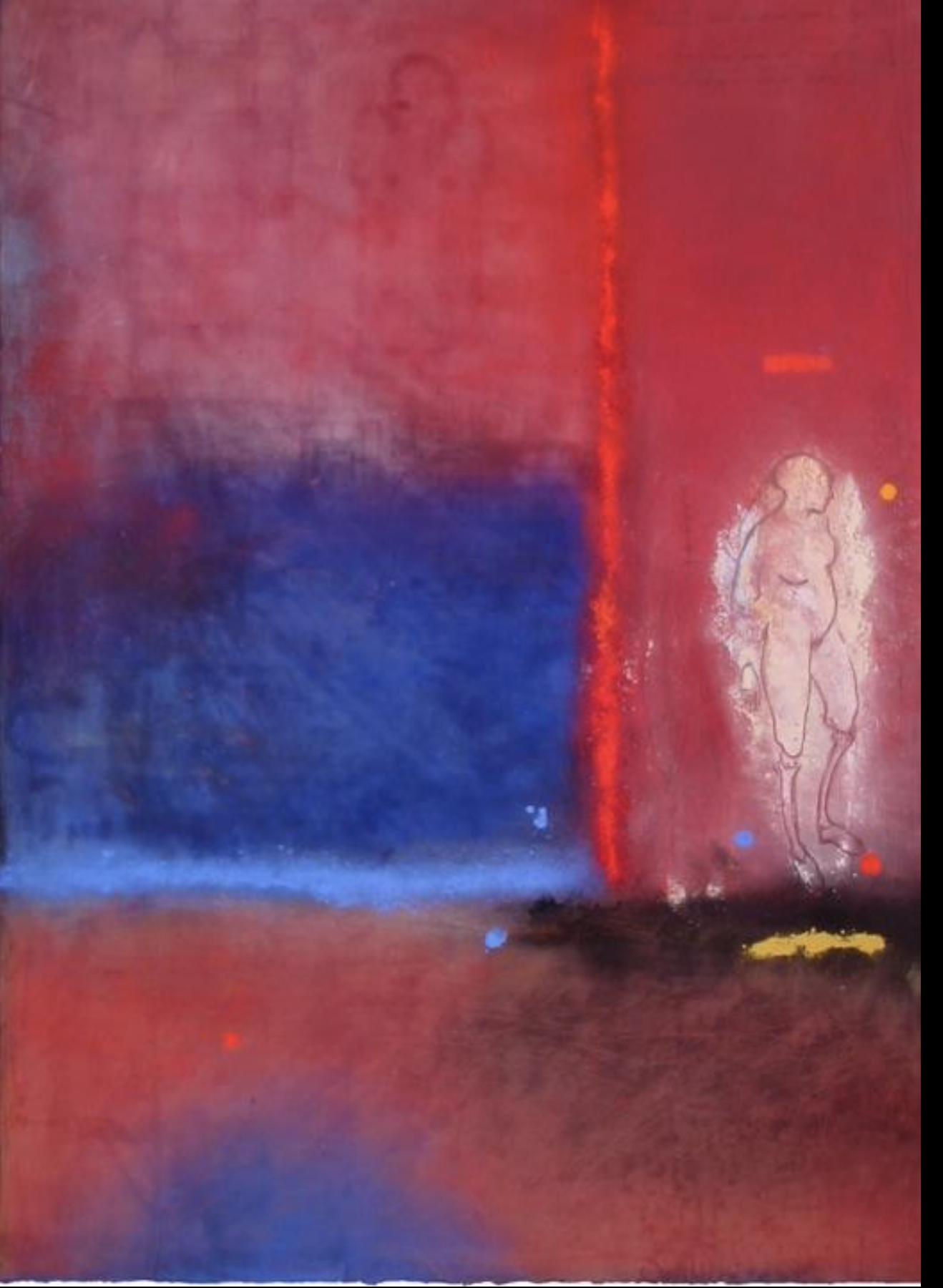
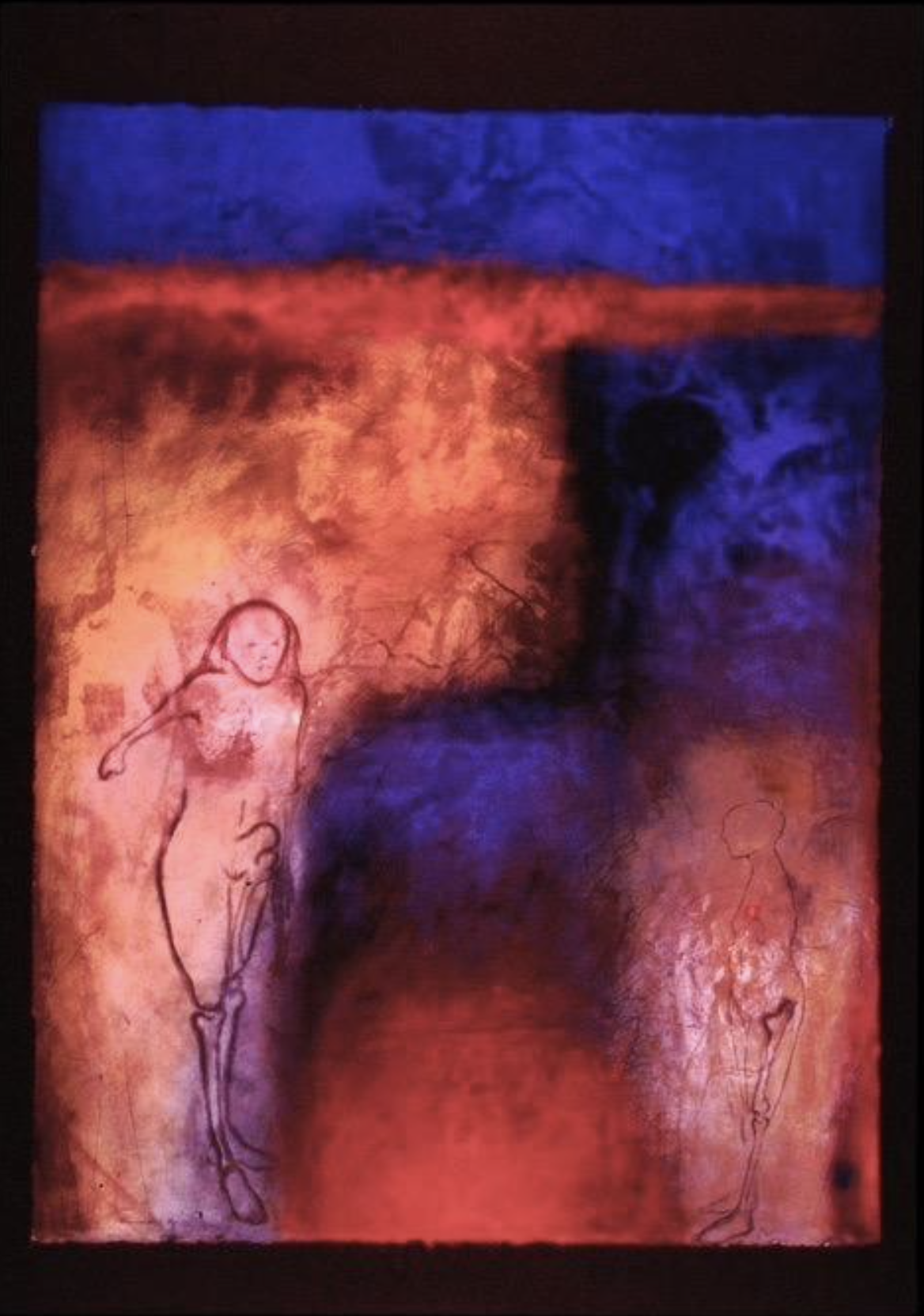
The Practice
In a fresco, the pigments are not painted on the wall they are embedded in plaster, in such a way that the pigments become the wall.
In Bernardi’s artwork, she departs from the same principle: the pigments become the paper.
She uses pure pigments that are embedded onto the paper by the pressure of a printing press. No binder, oil or medium is used in this process allowing the pigments to maintain their purest intensity.
Each fresco on paper is the result of multiple runs through a printing press where layers of pure powdered pigments are pressed into wet paper.
The coloration, often times, is a process of subtraction, a scraping away from one layer into another one, an archeology of intent, a patient uncovering of colors reacting among themselves within a topography of pigmented dust.
DEL INSTINTO POR LA JUSTICIA AL ARTE COMUNITARIO
As an artist who works in and with community, Claudia’s residency was met with great enthusiasm by students, artists and community leaders from Santa Barbara. During her week-long residency, Las Maestras Center along with la Maestra Claudia planned a series of workshops to discuss the instinct of justice and el arte comunitario in Claudia’s artwork and activism.
Through a series of talks that began with the public presentation "The Instinct of Justice, The Practice of Beauty" on April 7, at the Interdisciplinary Humanities Center, the UCSB student body and faculty along with the community, both in person and online, learned about Argentina’s history of resilience and determination to seek justice and the role of artist’s like Bernardi.
Students who were interested in the work of Maestra Claudia and the intersection of art, science and human rights, were able to attend a three hour seminar, "Cartography of Memory", where student learned what mapping justice looks like through the arte comunitario of Argentina and artists’ clarion call to: "NO OLVIDAMOS, NO PERDONAMOS Y NO NOS RECONCILIAMOS".
Maestra’s Claudia’s also had the opportunity to be in community. After a "Community Dialogue" where Bernardi discussed her work with the School of Perquin, la Maestra was invited to meet a group of mujeres and artistas comunitarias here in Santa Barbara. To learn more about Claudia's residency, read our Blog by John Jairo.
Claudia Bernardi at El Centro Santa Barbara on Thursday, April 14, photo by: Barbara Parmet
Celia Herrera Rodríguez introducing Claudia Bernardi at El Centro Santa Barbara on Thursday, April 14, photo by: Barbara Parmet
Graduate Student Seminar with Claudia Bernardi at Las Maestras Center on Monday, April 11, photo by: Maya Gomez




